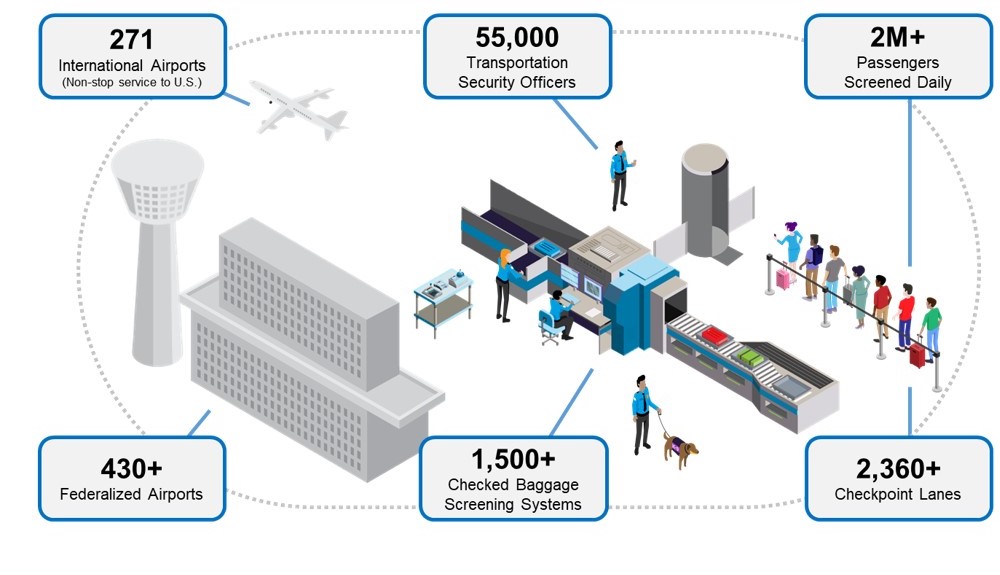Open Architecture is a design approach in which equipment components, such as software and hardware, are standards-based and interoperable to allow a wide range of industry partners to create improved subcomponents (like new detection algorithms, user interfaces, or reporting systems).
Vision
TSA’s vision is a connected transportation security system of systems in which state-of-the-art solutions are quickly adopted to address emerging threats and enables a dynamic screening environment.

Common and Accessible Data and Interface Standards
Open Architecture success depends on common and accessible data and interface formats established in partnership with industry stakeholders. For TSA, the Digital Imaging and Communications in Security (DICOS) Standard and Open Platform Software Library (OPSL) provide the foundational common and accessible data and interface standards to enable a connected transportation security system of systems.
Release Announcement
OPSL SDK V3.1.2 and DICOS V3 SDK releases are available for the following architectures:
- Red Hat Enterprise Linux (RHEL) 8.10
- Windows 32bits
- Windows 64bits
Please contact OASupport@tsa.dhs.gov for access
TSA OA Roadmap
Press Release
TSA-ACI-E Agreement to Pursue OA
Press Release
Eyes on the future
Press Release
